Are you wondering when you can go shrimping in Texas? Well, you’ve come to the right place! As someone who’s been covering Texas fishing regulations for years, I’ll break down everything about Texas shrimp seasons in simple terms. Let’s dive right in!
Texas Shrimp Season Zones and Dates
Texas divides its coastal waters into two main zones:
Southern Zone
From Corpus Christi Fish Pass (27° 40′ 34″) to Mexican Border
Beyond 5 Nautical Miles
- Open Season: December 1 – May 15 & July 16 – November 30
- Hours: 24/7 (day and night fishing allowed)
- Catch Limit: 100 pounds per day (heads must stay attached)
Inside 5 Nautical Miles:
- Open Season: July 16 – November 30
- Hours: 30 minutes before sunrise until 30 minutes after sunset
- Catch Limit: 100 pounds per day (heads must stay attached)
- Winter Closure: December 1 – May 15
Northern Zone
From Corpus Christi Fish Pass (27° 40′ 34″) to Louisiana Border
Beyond 5 Nautical Miles
- Open Season: December 1 – May 15 & July 16 – November 30
- Hours: 24/7 (day and night fishing allowed)
- Catch Limit: 100 pounds per day (heads must stay attached)
Inside 5 Nautical Miles:
- Open Season: February 16 – May 15 & July 16 – November 30
- Hours: 30 minutes before sunrise until 30 minutes after sunset
- Catch Limit: 100 pounds per day (heads must stay attached)
- Winter Closure: December 1 – February 15
Important Notes About Texas Shrimping
Summer Closure Period
Both zones have a summer closure period from May 15 to July 15 within 9 nautical miles from shore. The National Marine Fisheries Service might close the Exclusive Economic Zone (9-200 nautical miles) during this time too.
Schedule Changes
The Texas Parks and Wildlife Department can change these dates with:
- 72 hours notice for closing dates
- 24 hours notice for opening dates
Tips for Successful Shrimping in Texas
- Best Times to Go:
- Dawn and dusk are typically most productive
- Incoming tides often bring more shrimp closer to shore
- Full moon periods can increase activity
- Equipment You’ll Need:
- Valid fishing license with saltwater stamp
- Appropriate nets (cast net or trawl depending on location)
- Bucket or cooler for storage
- Ice for keeping catch fresh
- Measuring tools to ensure legal catch
- Popular Shrimping Locations:
- Galveston Bay
- Matagorda Bay
- Corpus Christi Bay
- Lower Laguna Madre
Conservation and Regulations
We gotta remember that these regulations exist to protect our shrimp population. Here’s why they matter:
- Helps maintain sustainable shrimp populations
- Protects breeding cycles
- Ensures future generations can enjoy shrimping
- Maintains healthy ecosystem balance
Types of Shrimp You’ll Catch
In Texas waters, you’re likely to encounter:
- White Shrimp
- Most common in bays
- Best season: Fall
- Average size: 6-8 inches
- Brown Shrimp
- Found in deeper waters
- Peak season: Summer
- Average size: 5-7 inches
- Pink Shrimp
- Less common
- Year-round presence
- Average size: 5-7 inches
What to Do With Your Catch
Got a successful day of shrimping? Here’s what you can do:
Quick Storage Tips:
- Keep shrimp on ice immediately
- Don’t let them sit in water
- Store in layers between ice
- Process within 24 hours
Simple Recipe Ideas:
- Gulf Coast Boiled Shrimp
- Add Old Bay seasoning
- Throw in some corn and potatoes
- Boil for 3-4 minutes
- Serve with cocktail sauce
- Grilled Garlic Shrimp
- Marinate in olive oil and garlic
- Grill 2-3 minutes per side
- Finish with lemon juice
- Perfect for tacos!
Final Thoughts
Y’all, shrimping in Texas is more than just catching seafood – it’s part of our coastal culture! Whether you’re a first-timer or experienced shrimper, following these seasons and regulations helps keep this tradition alive for future generations.
Remember to check the Texas Parks and Wildlife Department website or call their hotline (727-824-5305) before heading out, as regulations can change. And don’t forget your license!
Happy shrimping, and may your nets come back full!
Note: All information is current as of August 2023. Regulations may change, so always verify current rules before heading out.
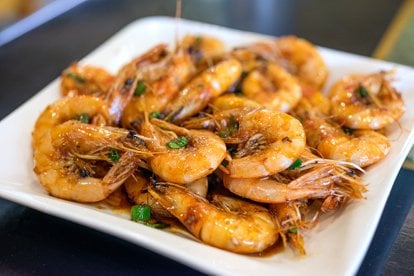
Republish this article for free
All of the Texas Observer’s articles are available for free syndication for news sources under the following conditions:
- Articles must link back to the original article and contain the following attribution at the top of the story: “This article was originally published by the Texas Observer, a nonprofit investigative news outlet and magazine. Sign up for their weekly newsletter, or follow them on Facebook, X, and Bluesky.”
- Articles preferably include Texas Observer alongside author byline (first name last name/Texas Observer).
- Articles cannot be rewritten, edited, or changed beyond alignments with house style books.
- Photos, illustrations, and other art may be available for syndication but must be confirmed. (AP s are not available.) Email [email protected] with questions.
- Please tag the Texas Observer in social media posts promoting the republished story.
- Please notify us by email that the article will be republished at [email protected].
Above: Minh Dang repairs nets on the Johnny II shrimp boat in Galveston, Texas.
Coastal roads in Texas tend to be flat except on the bridges that rise to cross many marshes, bayous, and rivers whose waters meander to Gulf of Mexico ports with long traditions of shrimping. About 95 percent of Texas’ shrimp fleet calls these harbors home: Port Arthur and Sabine; Galveston and Bolivar; Palacios; and Port Isabel and Brownsville.
At the docks in Galveston, shrimp boats’ names reflect their owners’ hope, family, and pride. The Lucky Star promises productive trawling. The Lady Bre expresses the love of Captain Adrian Etie for his wife, Briana. The Capt. Johnny and the Capt. Johnny II and III honor owner Johnny Huyn.
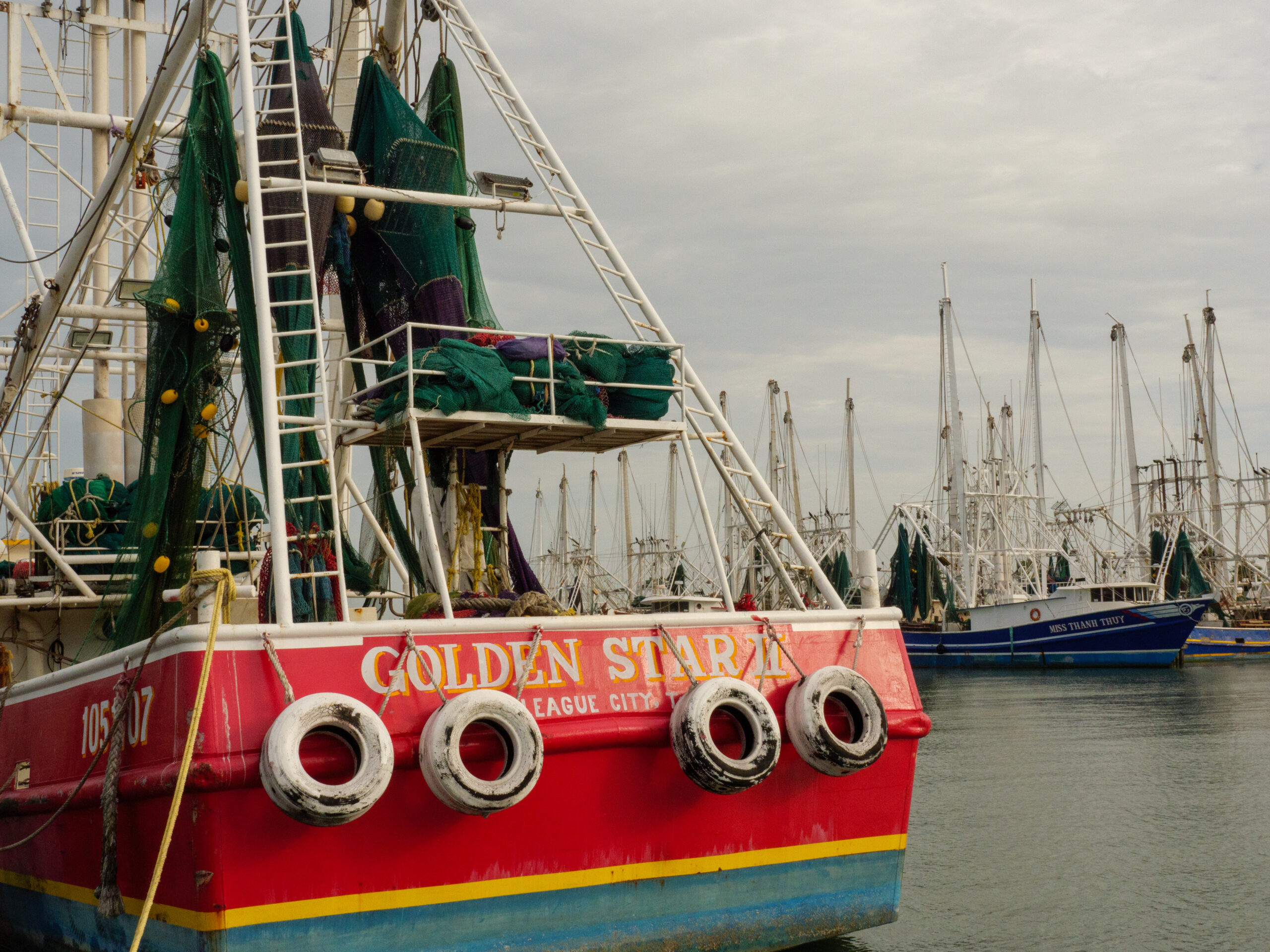
It’s easy to read these boats’ names because many sat idle in their berths even during the height of the shrimping season, which began July 16 and ends on November 30. In normal times, these boats would be out in a bay for the day or at sea for weeks, following shrimp from Texas to Florida and back again. But these are not normal times. The American shrimping industry, from the Gulf of Mexico around Florida to the South Atlantic, is nearly at a standstill, undersold and sidelined by a deluge of cheap imported farm-raised shrimp from Asia and South America that have been “dumped”—sold to the United States at below-market value.
Many owners are keeping their boats docked rather than spending money on diesel, boat repairs, and crew wages to net shrimp that will sell at a loss. The Eties have been running up credit card debt and selling shrimp meant for human consumption for bait because prices are so low. “[Shrimpers] need supplies like ice and diesel. It takes money to get the boat out there,” said Briana Etie. “And if you don’t have a place to sell your shrimp when you get back in, what’s the point?”
Minh Dang, a crew member on the Capt. Johnny II, emigrated from Vietnam fifteen years ago and worked steadily in the shrimp industry until this year. With his income based on a percentage of shrimp sold, fewer trips to sea have taken a toll on his family. “I’ve had to borrow money from friends to pay my mortgage,” he said. “And my wife, who’s never worked before, has had to get a job.”
For the first time in the shrimp industry’s century-old history, governments of five of Texas’ coastal counties—Galveston, Matagorda, Calhoun, Chambers, and Jefferson–have issued shrimp disaster declarations or resolutions, publicly pleading for help. Counties and parishes in the seven other southern shrimping states have also declared shrimp disasters.
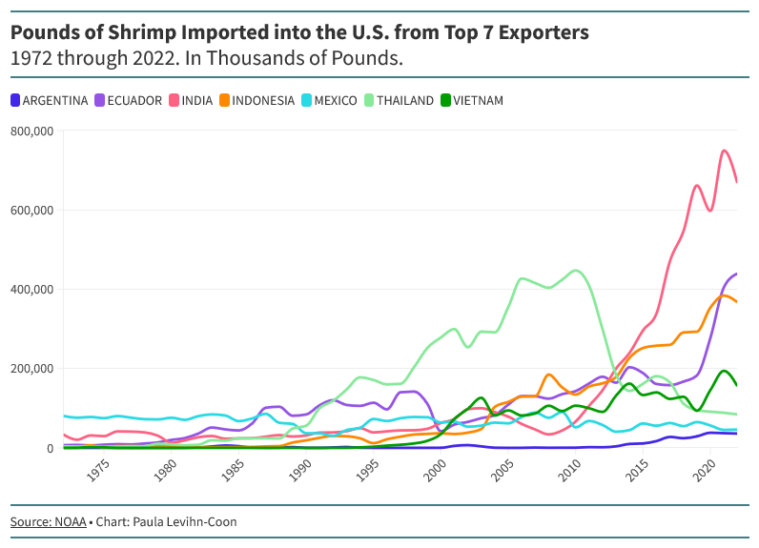
The Florida-based Southern Shrimp Alliance, the industry’s primary lobbying organization, has requested help from southern governors and members of Congress. “The U.S. shrimp fishery throughout the Gulf of Mexico and Southeast region is suffering an unprecedented catastrophic crisis that threatens its very existence and the many small family-owned businesses that are at the core of the economies of coastal communities throughout the region.”

This year’s crisis arose from a longer slump. Nationwide, shrimp consumption is booming, but Americans no longer eat as many Gulf shrimp.
In 1985, Americans ate 2 pounds of shrimp per person and 90 percent of that shrimp was caught in the United States. By 2021, Americans were consuming nearly three times as many shrimp—an average of 5.9 pounds per person per year, according to the National Fisheries Institute. But 94 percent of that shrimp is imported.
In 2022, the United States imported more shrimp than Americans eat. Both imported and domestic shrimp have piled up in freezers at shrimp processors. “They literally have nowhere to store it or sell it. Cold storage is full across the Gulf. I’ve heard that there are freezer trucks in some parking lots in cold storage facilities in Florida,” said Laura Picariello, a marine fisheries expert with Texas A&M University’s Sea Grant in Galveston. “[Shrimpers] are really struggling. There are people who absolutely are not going to be in this business by the end of the year if things don’t change, and I don’t know how things are going to change at this point.”
Prices have plummeted. The National Oceanic and Atmospheric Administration’s latest data (from May) showed shrimp prices for three sizes of shrimp were at their lowest since 2002, and since then, they’ve plunged more.
The Texas shrimp fishery remains the state’s largest commercial fishery, accounting for over 80 percent of commercial fish landings. In an average year, Texas shrimpers and shrimp processors contribute about $320 million to the Texas economy and employ over 5,000 full- and part-time workers, according to Texas A&M.
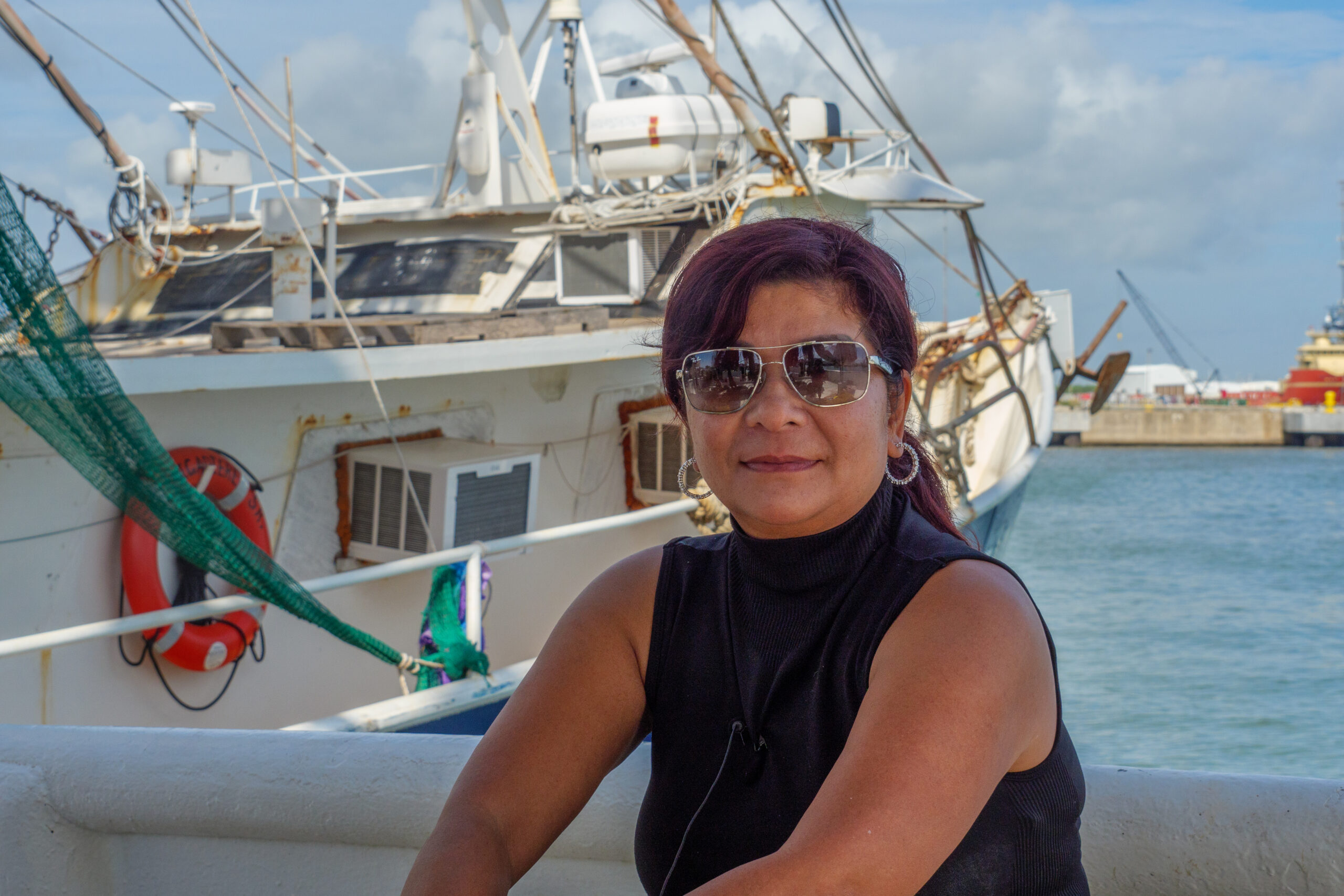
About a third of Texas shrimpers are of Vietnamese heritage, a third are Caucasian, and a third are Hispanic. The Vietnamese fleet is located primarily on Texas’ north coast and the Hispanic fleet is on the south coast. Palacios is the port where all these cultures meet. “Palacios is a really great mix of all three, and they all work really well together,” Picariello said. “It’s a really cool place.”
But this year, shrimpers in Palacios and elsewhere are asking Picariello how to apply for food stamps. And in Port Arthur, Father Sinclair Oubre, a Catholic diocesan priest and the treasurer of the Port Arthur Area Shrimpers Association, is worried about shrimpers’ mental health and their risk of suicide.
Shrimpers blame the federal government for the current shrimp crisis. “I just don’t understand why the government doesn’t want to help control [shrimp imports] and help our own American companies,” said Briana Etie, the Galveston-based shrimper’s wife.
Starting in the 1970s, to fuel the economies of developing countries, international monetary funds like the World Bank—which is partly funded by the U.S. government—supported the construction of aquaculture facilities in Asia and South America. Some of these loans were later forgiven. With those investments, inexpensive labor, and loose environmental restrictions, these countries could produce shrimp cheaply, which they exported to the United States starting in the ’80s.
Ecuador and India are currently perceived as the largest threats to the U.S. shrimp industry. In five years, from 2016 through 2022, the volume of shrimp imported from these two countries skyrocketed to 59.8 percent from 37.5 percent of U.S. shrimp imports, according to trade data.
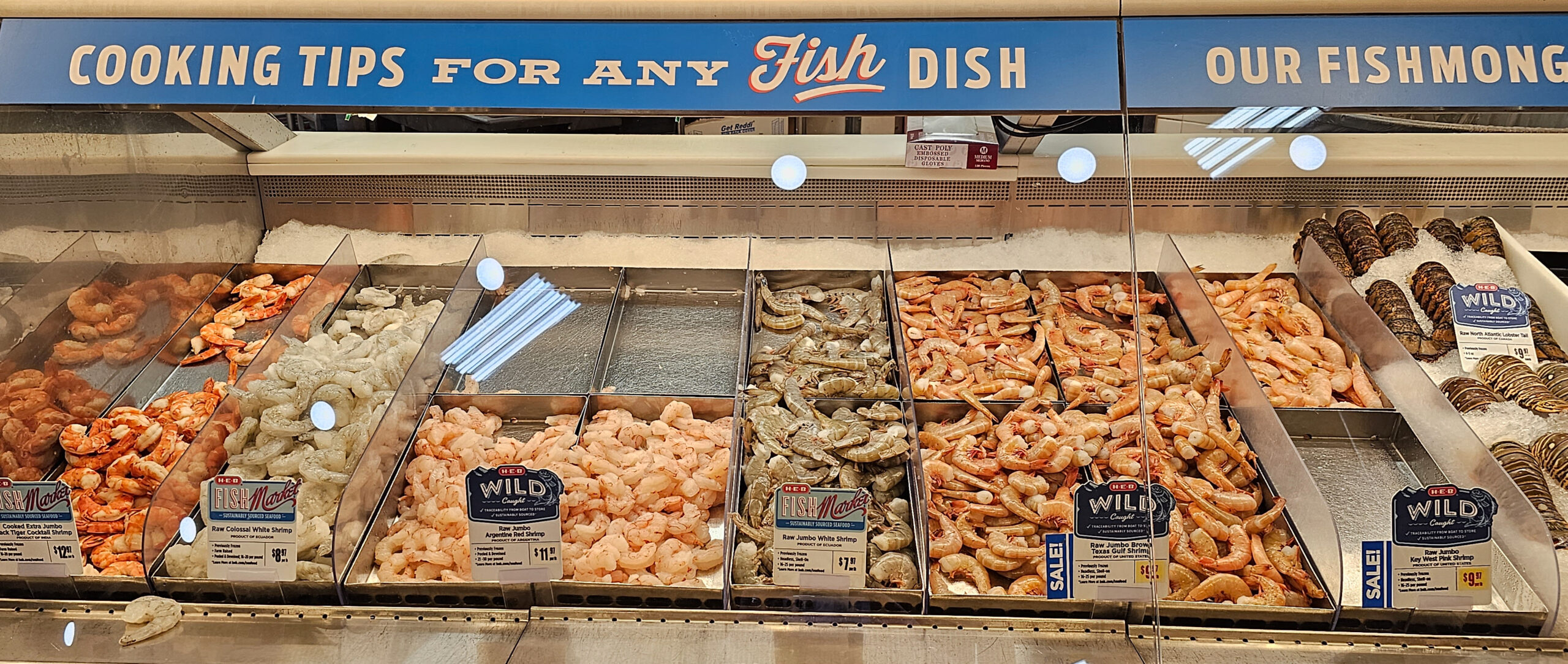
“The World Bank is financing the Ecuadorian shrimp and they’re using our tax dollars to do it. They’re making it tough,” said Luke Rawlings, who owns shrimp boats and a bait camp in Matagorda. When the Texas Observer caught up with him by phone, he was hauling a trailer full of frozen shrimp to New Mexico to sell his catch directly to restaurants.
Ecuador grew its shrimp industry to fulfill demand from China. During the pandemic, however, China stopped importing shrimp from Ecuador. With nowhere to export its shrimp, Ecuador sent it to the United States. China has since resumed its imports, but Ecuador is not stopping exports stateside. Its worldwide exports have grown 15 percent since last year, to 2.34 billion pounds. Ecuador is currently the world’s largest shrimp exporter, according to Intrafish.
Shrimp farms in India are heavily subsidized. For example, in 2017, shrimp farmers in Punjab received a 90 percent subsidy to dig shrimp ponds and a 50 percent subsidy for purchasing equipment and feed.
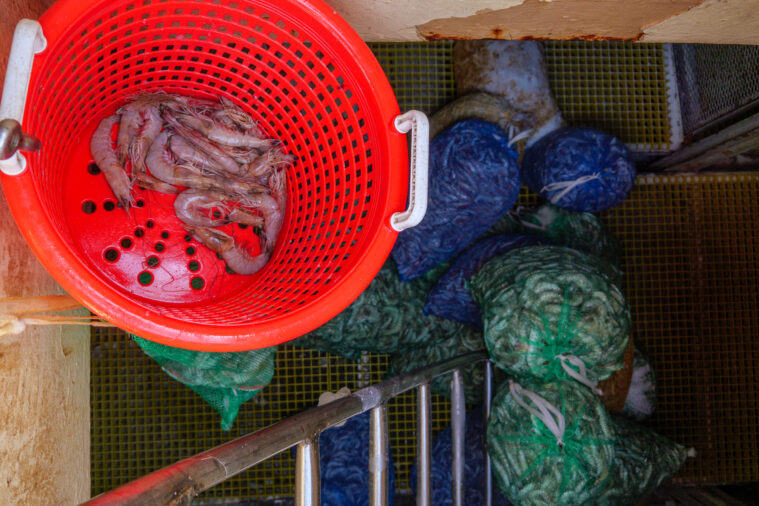
American shrimpers, in contrast, do not receive financial help from the government. “It’s not like farming. There are no subsidies. There’s no money going to help fishermen,” said Nikki Fitzgerald with Texas A&M’s Sea Grant, who advised the Chambers and Jefferson County judges who decided that their disaster declarations were necessary.
Besides the financial harm caused to American shrimpers, there are environmental and ethical concerns about importing farm-raised shrimp. These include the use of forced labor in shrimp aquaculture and processing; deforestation of coastal mangrove swamps—which are nurseries for aquatic animals and protect coastal lands from erosion—to make aquaculture ponds; and the chemicals and antibiotics found in imported shrimp.
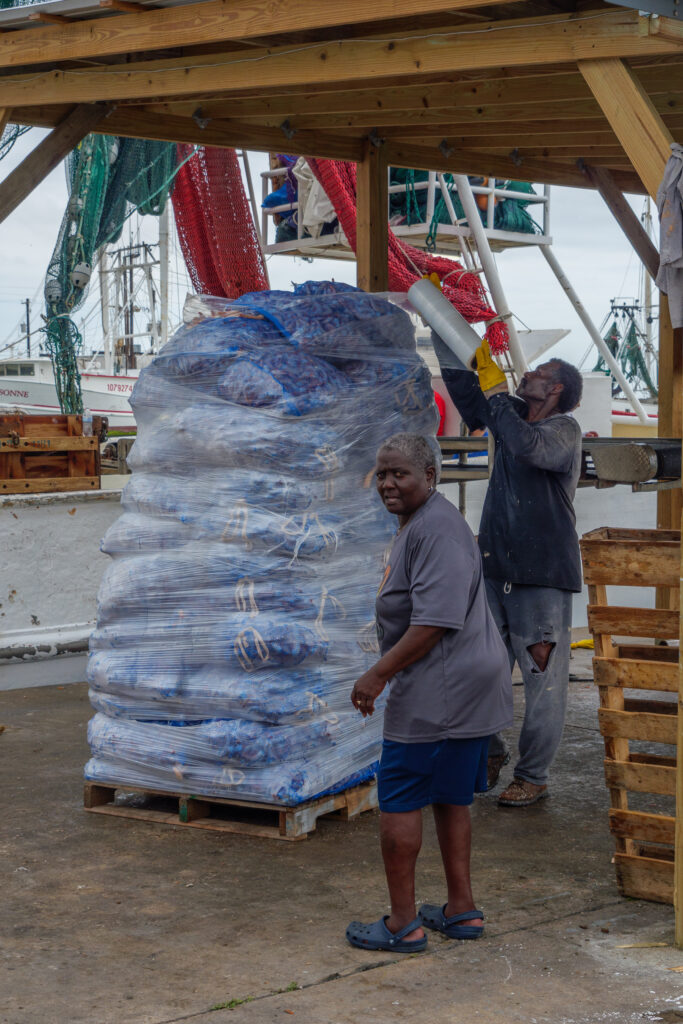
A 2015 Consumer Reports investigation, “How Safe is Your Shrimp?”, found that 61 percent of the shrimp they tested from Ecuador and 74 percent from India contained dangerous bacteria, antibiotics and drug residues. It also noted that the Federal Drug Administration only tests 0.7 percent of imported shrimp.
In contrast, the European Union, Canada, and Japan test between 15 and 50 percent of their imported seafood, according to the Johns Hopkins Bloomberg School of Public Health.
In Texas, bay shrimpers usually go out for the day, netting bait shrimp year-round and shrimp for human consumption in the fall and spring. They keep their catch on ice or in live wells.
Many Gulf shrimpers go to sea for weeks at a time, only returning to port to refuel or make repairs. Shrimp are individually quick-frozen and sorted by size at sea. For the last two years, however, shrimpers have not traveled long distances because boat owners can’t afford the diesel this entails. “This has been a very big disruption Gulf-wide in how this fleet operates,” Picariello said.
When the season ends, boat owners conduct routine maintenance on their boats, but these days “there’s a lot of these people don’t want to put any more into their boats,” said Nga Pham, a dock owner who has been in the shrimp industry her whole life. Many shrimpers have canceled their insurance policies, she said, a risk at any time but especially during hurricane season.
There is little hope of improving this situation quickly enough to rescue Texas shrimpers this shrimp season, although there is some movement on the issue. On September 28, U.S. Senator Bill Cassidy, R-L.A., introduced the India Shrimp Tariff Act, which would raise tariffs on shrimp from India up to 40 percent by 2024. On October 25, a coalition of shrimp organizations petitioned the U.S. International Trade Commission to impose tariffs on shrimp from Vietnam, Ecuador, India, and Indonesia.
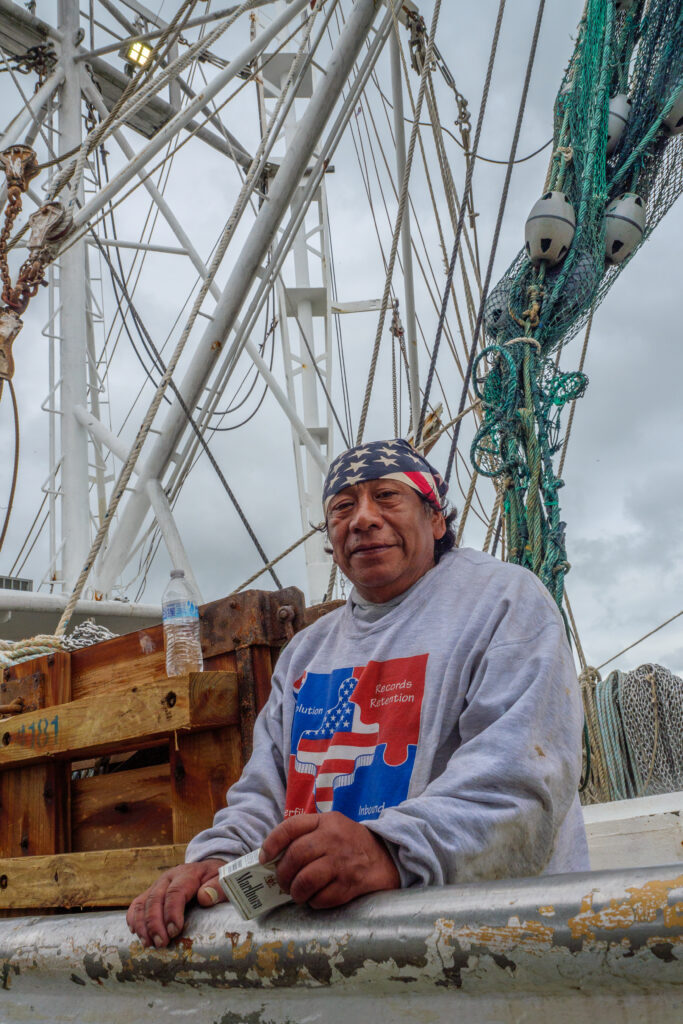
Deborah Long, with the Southern Shrimp Alliance, said other efforts to get the United States Department of Agriculture to buy American shrimp for government entities like prisons and military bases; increased testing of imported shrimp; implementing bans on countries that use slave labor; and new tariffs could help the industry fairly quickly, but international trade negotiations take much longer to show results.
“When you look environmentally, when you look health-wise, when you look at national security and the general food supply, having a domestic [shrimp] industry is vital,” Long said. ‘“But more importantly, [shrimping] is a huge economic driver in coastal communities. They are not just the boat and the crew. They are the icehouse and the dock and the trucks that are moving the shrimp. There are entire communities that are at risk if this industry goes under.”
Some boat owners continue sending their vessels to sea, taking a loss after paying for fuel, crew’s wages, and repairs, just to keep their skilled crew from taking land jobs “because once an owner loses his crew, it’s very difficult to find somebody who is willing and capable to go out to sea for several weeks and run the boat the way it needs to be run,” Long said.
At the Palacios docks, Ken Garcia greets Captain Oscar Narahao and the arriving crew of the Father Mike, the boat named after his father’s cousin, a Catholic priest. While he supervises the off-loading of bags of shrimp from the hold onto pallets, he reflects on this shrimp season. “It’s been pretty tough, pretty bad. A lot of imports,” he said. “Our own government let us down.”
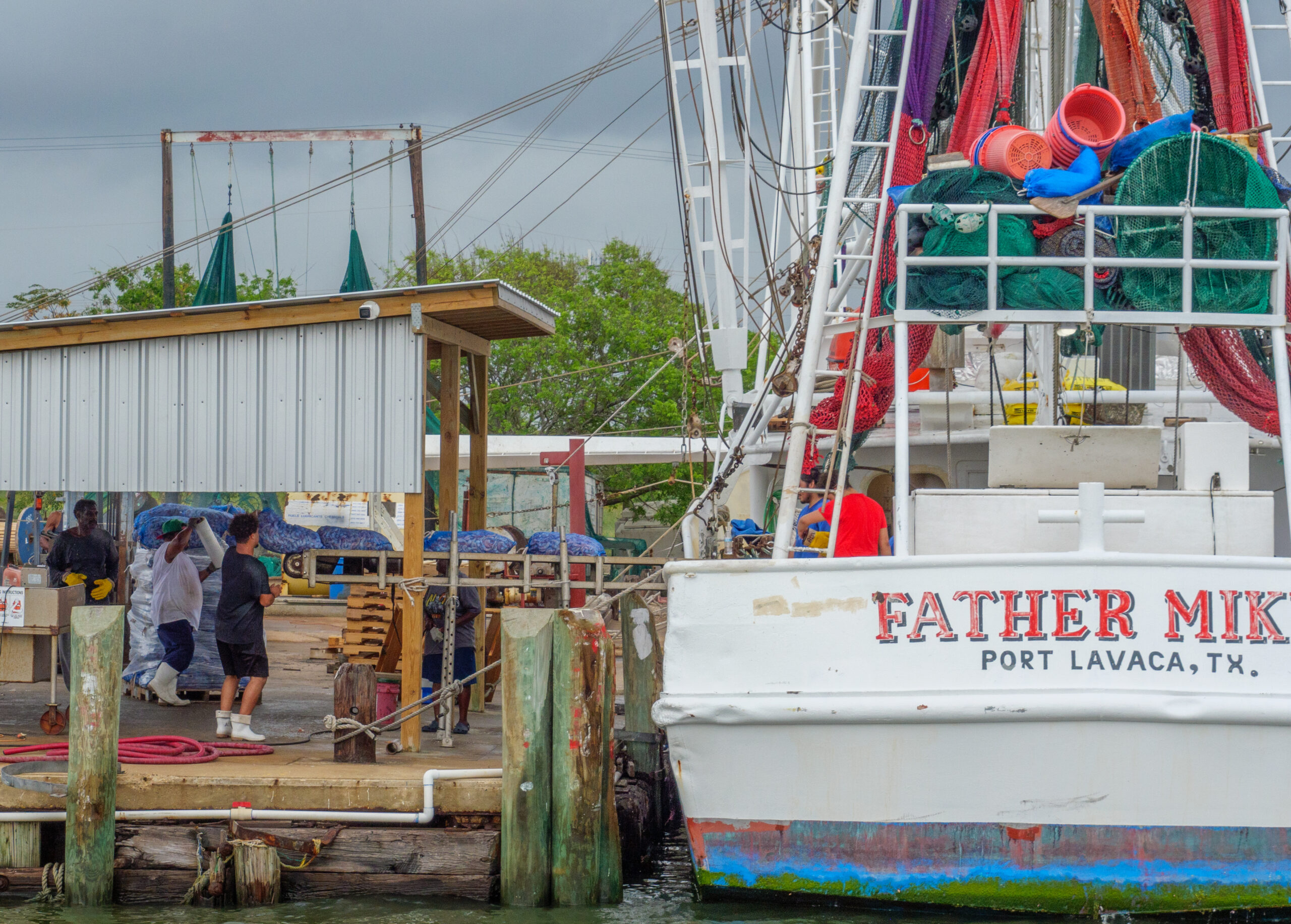
Garcia’s grandfather, Edward Garcia Sr., started his family’s shrimp business in 1952. Garcia and his father now own 15 shrimp boats, one of the largest shrimp fleets in Texas. Despite low shrimp prices, they have sent their boats to sea for 50 days at a time this season, but for fewer trips than usual.
“It wasn’t profitable for us to work, and there’s only so much bleeding we can do,” Garcia said. “I had a lot of families to worry about, people counting on me, so we had to try. Most of my workers have been working with me for the last 15 years, and a lot of them worked for my dad for the 15 years prior to that. So, you know, I owe it to them.” He credits H-E-B, his largest customer, with his ability to send boats to sea because “they bought a lot of shrimp in this weak market.”
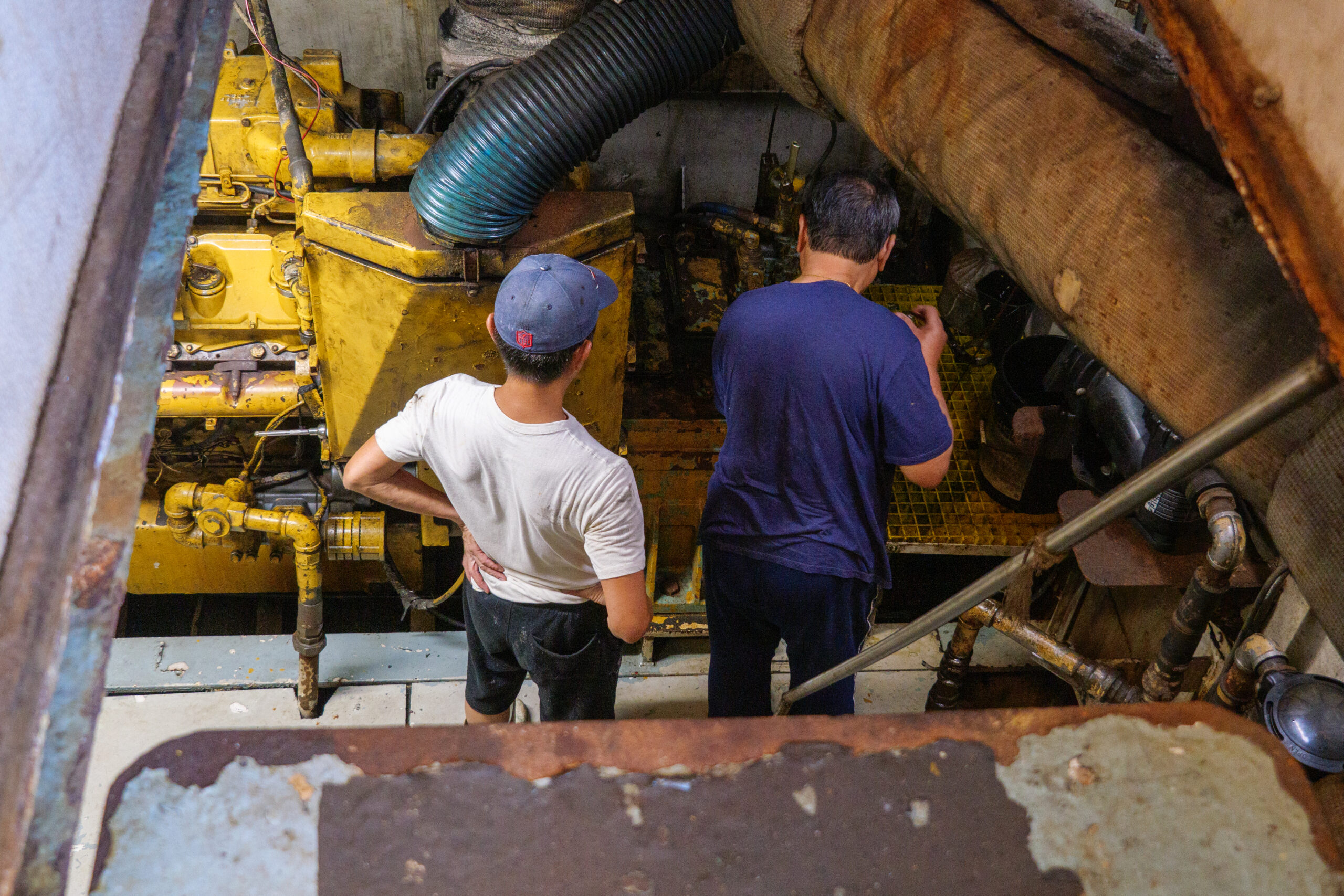
He plans to tie up his fleet at season’s end and does not know if or when he will send boats back out to sea. Five years ago, his captains, who are paid 35 percent of the value of the shrimp they catch, made $80,000 to $100,000 a year, and his crews made about 80 percent of the captain’s wages. “This year, they all made about half of that,” Garcia said. “They’re working twice as hard for the same money.”
The Observer asked Garcia if he would like his only child—a 1-year-old son—to go into the shrimping business one day. “I don’t know. I was lucky enough that I got to do what my dad and grandpa did but maybe three generations is enough,” he said. “Maybe he should do something else.”
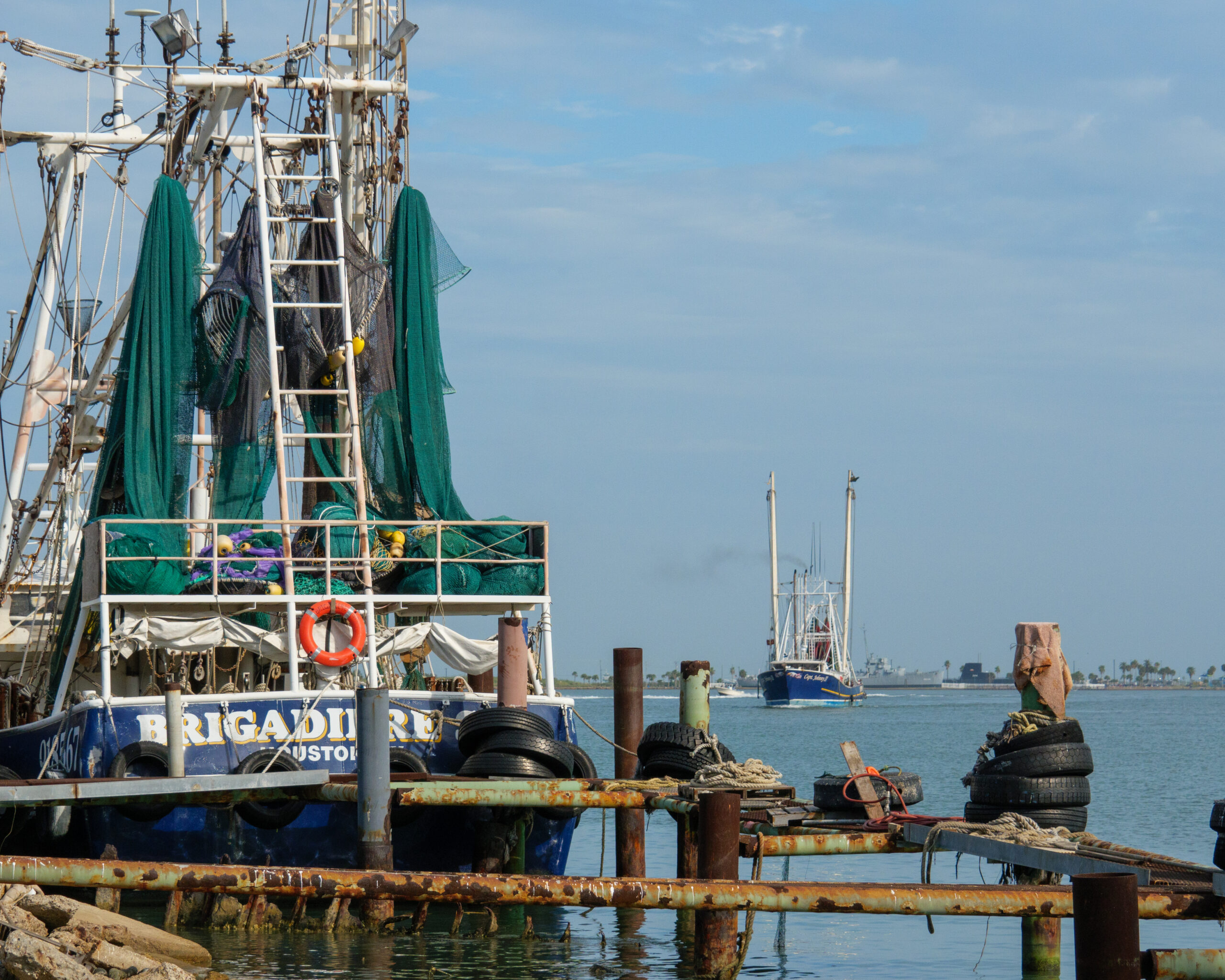
CORRECTION: An earlier version of this story mistakenly identified Nikki Fitzgerald as a signatory on the Chambers County shrimp disaster declaration. The Observer apologizes for the error.
Shrimp Science
FAQ
What months are good for shrimp?
White Shrimp — White shrimp are prized for their large size, their tender texture, and their mild flavor. They are great for shrimp boils, Louisiana BBQ shrimp, and other preparations where they can soak in the flavors of the dish and their texture really stands out. White shrimp season is April through December.
What is the season for Gulf shrimp?
Gulf shrimp are in season year-round, with peak season being May – September. A shrimp’s heart is located in its head! Ounce for ounce, shrimp have fewer calories than chicken, beef or pork.
What is the limit on shrimp in Texas?
(C) Bag and possession limits: No more than 15 pounds of shrimp (in their natural state with heads attached) per person per day may be taken or possessed on board. (D) Size limits: Shrimp of any size may be retained when caught lawfully during spring open season in inside waters.
Where do shrimp come from in Texas?
Texas shrimp landings average almost 32 million pounds valued at $88 million to the commercial shrimper. Brown shrimp are harvested in coastal bays and in the Gulf and account for over 80 percent of the Texas catch.
